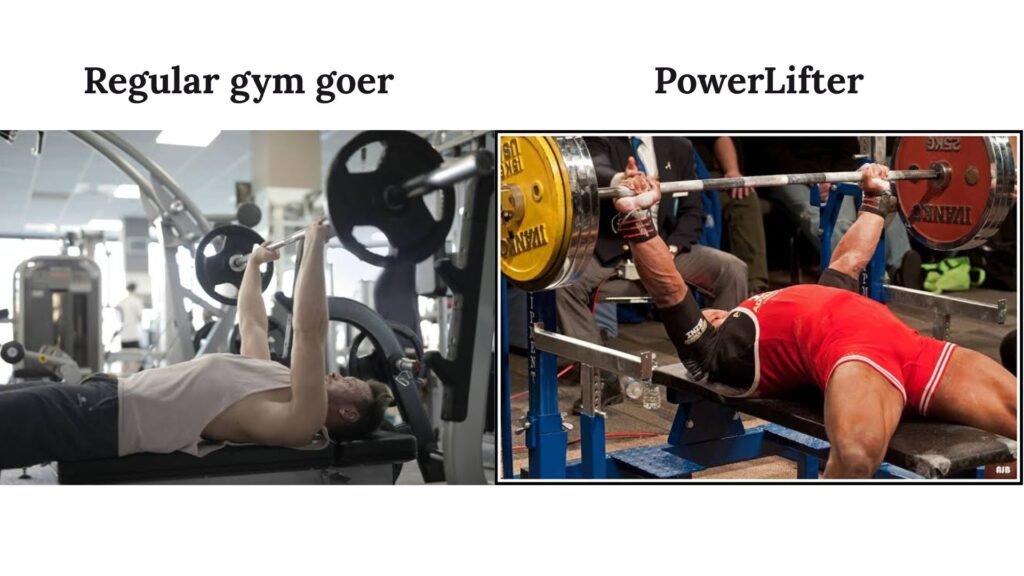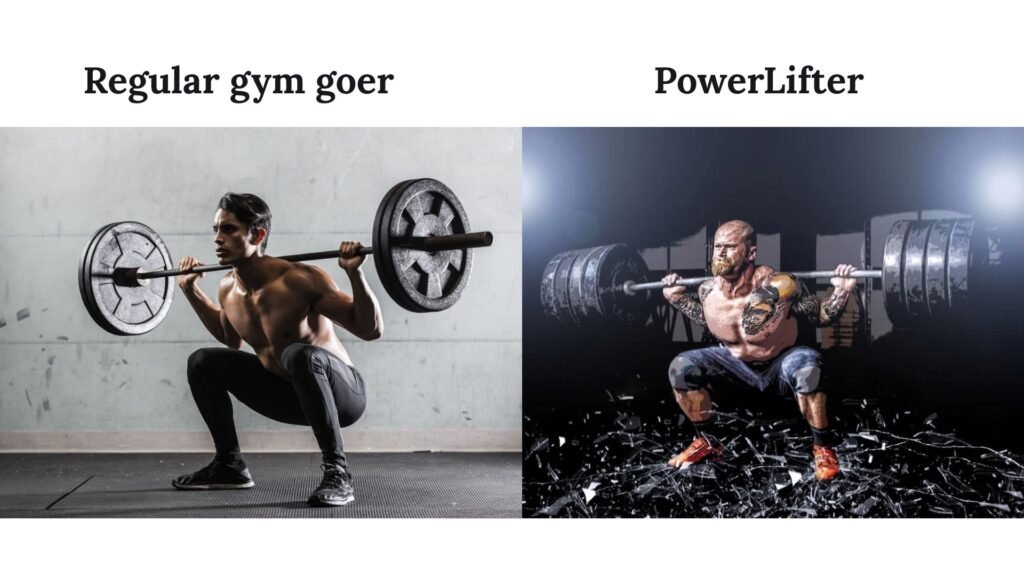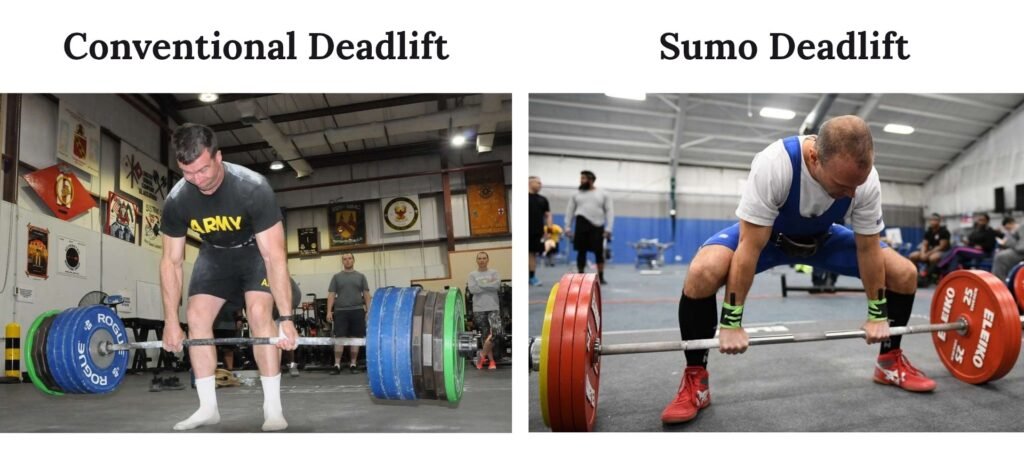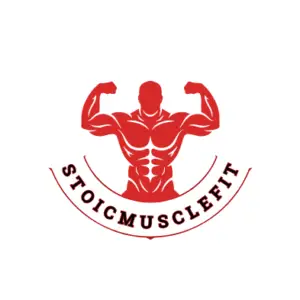Powerlifting vs Regular Training: A Deep Dive
Powerlifting is a sport mainly consisting of 3 compound movements: the Squat, Bench Press, and Deadlift.
Even though you can train for powerlifting at the gym, it is actually quite different from the regular way of training most people would do at the gym. Most people go to the gym with the goal of losing or gaining weight. They also have the goal of building muscles simultaneously. Hence, they eventually get into hypertrophy training.
Muscle hypertrophy training primarily focuses on building muscles as efficiently as possible. In other words, performing the movements while wasting as little energy as possible, generally for about 6–12 repetitions. Machines are very good at doing the task of eliminating any stabilizing muscles required for performing the reps. Training this way allows for the lowest amount of fatigue generation; hence, training only the target muscle becomes convenient.
Whereas, powerlifting primarily focuses on lifting the maximum amount of weight possible for a single repetition. The difference between hypertrophy training and powerlifting is not only about the weight or rep but significantly about technique as well.
The Bench Press: Powerlifting vs Casual Training

If you look at a regular person benching, you’ll see him bench with his back flat on the bench or slightly arched and his hips attached to the bench. This is the way most casual lifters press—minimal emphasis on setup or technique—focusing mainly on pushing the weight with their chest and triceps.
Whereas, if you observe a powerlifter bench, you’ll realize that he has a significantly bigger arch, and his glutes look as if they are not touching the bench. This is done on purpose and is a fundamental part of the powerlifting bench press technique.
The exaggerated arch isn’t just for show. It plays a major role in maximizing performance and safety.
A bigger arch decreases the range of motion, making it easier to lift heavier with the same effort.
Since the bar starts and ends higher off the chest, less work is required per rep, which is a big advantage in a sport where every kilogram matters.
The arch also engages other muscles like the lats, upper back, and leg muscles, alongside the chest.
With tighter scapular retraction and planted feet, the lifter creates a full-body press rather than just an upper-body one.
In addition to improving performance, the arch helps protect the shoulders by creating a more stable pressing angle, reducing stress on the joint. That’s why powerlifters train their setup as seriously as the lift itself. Every part of the arch—from foot placement to scapular tightness—is intentional and practiced, since it can get extremely risky if the form breaks while you have a humongous amount of weight above your chest.
The Squat: Technique Behind the Power

While you can visually see a big difference in the stance of a regular person bench and a powerlifter bench, you will less likely notice the changes between a regular person squatting and a powerlifter squatting. Once you observe the details, you will realize there are subtle changes actually.
If you watch a regular gym-goer perform a squat, you’ll usually see them using a shoulder-width stance, standing fairly upright, and squatting deep—often below parallel—with the bar placed high on their traps. This is the standard high-bar squat, and it focuses on building quad strength and general leg development.
But if you observe a powerlifter squat carefully, you’ll notice these changes:
Powerlifters typically use a low-bar squat, where the bar rests lower on the back, across the rear delts instead of the traps.
This bar position shifts the center of gravity and allows the lifter to lean forward more.
Their stance is also wider, sometimes much wider than shoulder width, with toes pointed out.
These adjustments are made deliberately. Why? To lift more weight.
The wider stance and forward lean reduce the range of motion, meaning the hips don’t have to travel as far down.
This setup allows powerlifters to use more muscle groups, especially the glutes, hips, hamstrings, and lower back, alongside the quads.
The body turns into a tightly braced unit, using every bit of leverage to lift maximally.
The squat in powerlifting is all about efficiency. It’s not about what looks the best or goes the deepest—it’s about who gets the most weight from point A to point B within the rules of competition. So while it might look slightly unusual compared to a regular squat, every adjustment is calculated to increase strength and control under heavy loads.
The Deadlift: Technique in Simplicity

In powerlifting, the deadlift is more than just picking a bar off the floor. It’s a full-body movement that requires precision, tension, and control.
Every part of the setup is intentional:
The feet are positioned based on whether the lifter is using a conventional or sumo stance.
The grip is firm and consistent.
The back is flat or slightly arched.
The entire body is braced before the bar even budges.
Nothing is rushed. A well-executed deadlift begins before the lift itself, with a tight setup that maximizes leverage and minimizes wasted motion.
The spine must stay neutral throughout the movement.
The lats are actively engaged to keep the bar close to the body.
The hips and legs drive the movement from the floor.
The goal is to reduce the range of motion as much as possible within competition rules. Even small adjustments in stance width, foot angle, or bar path can make a big difference in how much weight is lifted.
Powerlifters treat the deadlift as a full-body lift, using the legs, glutes, hips, core, lats, and grip strength all together in one coordinated effort.
Conventional vs Sumo Deadlift
There are two main styles used in powerlifting:
Conventional Deadlift
Feet are placed about shoulder-width apart.
Hands grip the bar just outside the knees.
This stance requires more lower back and hamstring involvement.
Often allows for a faster pull off the floor.
Sumo Deadlift
Uses a much wider stance with toes pointed outward.
Hands grip the bar inside the knees.
Shortens the range of motion even more.
Places greater emphasis on the hips and glutes.
Allows for a more upright torso.
Lifters choose the style that best suits their body mechanics, mobility, and strength distribution.
Whether pulling conventional or sumo, the focus remains the same: efficiency and control. The bar moves in a straight line, the body stays tight, and the lifter maintains tension from start to finish.
Creating and maintaining intra-abdominal pressure is also a key part of the lift, allowing the lifter to stay braced and safe under maximum loads. The deadlift may look simple from the outside, but at the powerlifting level, it’s a calculated, technical movement where every detail matters.
How you can get into this sport (Powerlifting) ?
It is very intimidating to get into powerlifting without anyone to guide, but with the knowledge and guidance you will receive below, you will definitely build the confidence you require to get into the sport of Powerlifting and lift the heaviest you ever had!
If you’re completely new to this world of fitness, it would be very beneficial for you to begin with hypertrophy training for higher reps at first. You can either focus on using only machines to focus on building target muscles only, or you can do the compound movements like the Bench Press, Pull ups, Push ups, Squats, Romanian deadlift and Deadlift to target more than one or two muscles at once. If your ultimate goal is to get into Powerlifting, Progressing with compound movements will be the most beneficial for you as they function in similar way, and make your body get used to using a lot of muscles at once.
If you’ve never consistently trained before, then you should focus on doing these movements for 6-12 rep range and use a weight that allows to you to hit muscle failure at the last set, or you can hit failure at every set which will be a little harder to keep track of, require more mental and physical energy, but tear then most muscle fibers, hence, build more muscles as long as you provide your body with the right food.
Once you get used to these movements, and feel ready; which often comes after months of experience, you should ask the trainer at your gym to spot you before you perform any of the Powerlifting movement and hit your PR (Personal Record). Once you do this for the first time, you will break free of the mental barrier of restraining yourself to very light weights and realise how much potential you actually have and how immense amount of weights you can actually lift!
We have a full guide on diet plan so that you can give your best on your workouts and hit new PR’s in no time: (Link will be available soon)
